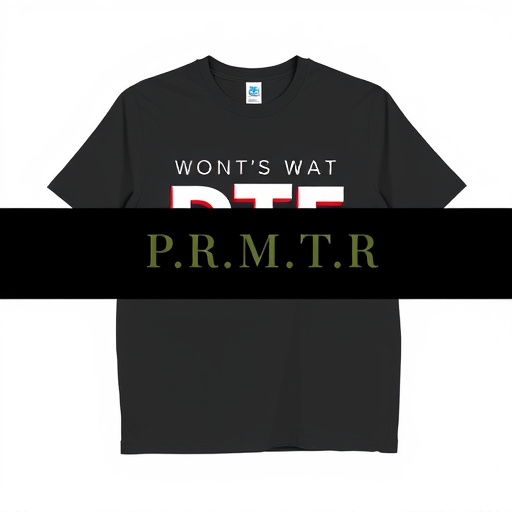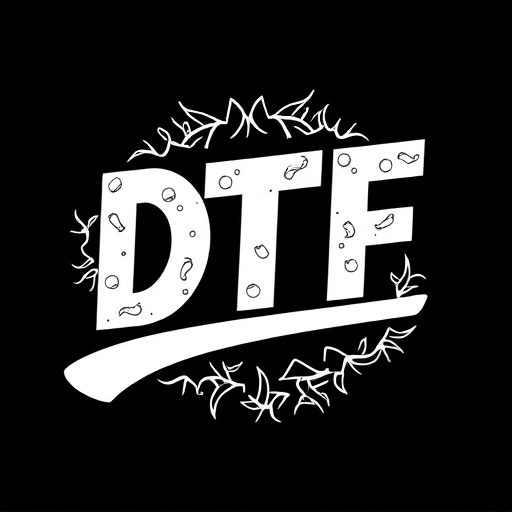Direct-to-Fabric (DTF) Transfer technology is revolutionizing textile printing by enabling vibrant and durable prints on dark fabrics. This process uses melted wax and ink to create a temporary bond that hardens upon cooling, resulting in exceptional print quality that retains color and detail over time. DTF Printing's applications range from fashion to sports equipment, offering dynamic designs for various sectors. Best practices for maintaining DTF prints' vibrancy include using high-quality transfer paper, precise printing, optimal heat press settings, and careful post-printing care.
“Unleash the power of vibrant visuals on dark fabrics with DTF (Direct-to-Fabric) transfer technology. This innovative printing method revolutionizes the way we adorn garments and textiles, offering a unique aesthetic appeal. In this comprehensive guide, we explore the science behind DTF transfers, their ability to produce stunning colors on darker materials, and their diverse applications in fashion, sports, and beyond. From understanding key components to best practices for longevity, discover the secrets to creating lasting, eye-catching DTF prints.”
- Understanding DTF Transfer Technology
- The Appeal of Vibrant Colors on Dark Fabrics
- Key Components for Creating DTF Prints
- Printing Techniques and Their Impact on Quality
- Applications in Fashion, Sports, & More
- Best Practices for Maintaining Longevity of DTF Prints
Understanding DTF Transfer Technology

The DTF (Direct to Fabric) Transfer technology has revolutionized the way we create vibrant and durable prints on dark-colored fabrics. Unlike traditional printing methods that might struggle with opacity, DTF offers a unique approach where ink is directly transferred to the fabric’s surface, ensuring rich colors and crisp details even on deep dyes. This process involves specialized printers that apply melted wax and ink simultaneously, creating a temporary resin bond that hardens upon cooling. The result is an exceptional print quality that retains its vibrancy over time and with frequent washing.
Understanding DTF Transfer Technology allows for the optimization of print designs and fabric choices. Different fabrics have varying capabilities to absorb and retain DTF prints, so selecting the right material is key. T-shirts, hoodies, and other garments made from natural fibers like cotton or polyester are commonly used, as they provide a suitable surface for the transfer. Additionally, pre-treating fabrics with specific chemicals can enhance ink adhesion and colorfastness, ensuring that DTF prints maintain their integrity even under rigorous use.
The Appeal of Vibrant Colors on Dark Fabrics
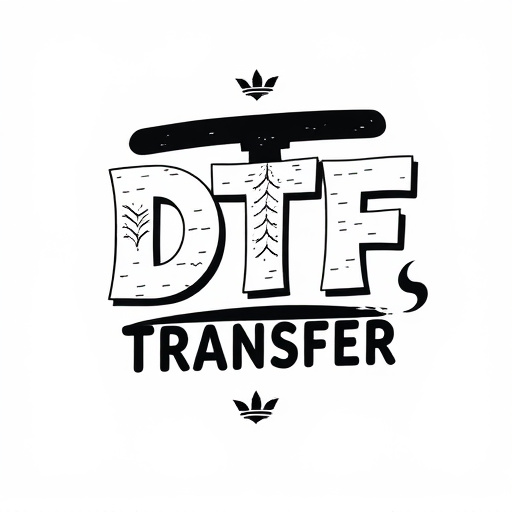
The appeal of vibrant colors on dark-colored fabrics is a trend that has been gaining traction in the textile industry. Dark fabrics, often associated with somber or muted tones, can now showcase a burst of energy and life thanks to DTF (Direct to Fabric) Transfer printing techniques. This innovative method allows for intricate designs and bold, eye-catching colors to be applied directly onto dark textiles, creating a striking visual impact.
DTF Printing offers a unique opportunity to transform ordinary fabrics into captivating canvases. With its ability to reproduce rich, vivid hues and intricate details, DTF Transfers have become a favorite among artists, designers, and fashion enthusiasts. The result is a collection of garments and accessories that stand out, with vibrant DTF Prints that refuse to be overlooked, adding a dynamic element to any wardrobe or decor.
Key Components for Creating DTF Prints

Creating vibrant and high-quality DTF (Direct to Fabric) prints requires a meticulous approach, focusing on several key components. Firstly, the design itself plays a pivotal role; intricate details and bold colors translate best onto dark fabrics, allowing for a striking visual impact. Using specialized DTF transfer paper is essential, designed to adhere firmly to fabric while preserving the vibrancy of dyes.
The printing process is equally critical. High-resolution printers capable of handling DTF techniques ensure precise color reproduction. Additionally, proper heat and pressure application during the press operation is vital to fuse the transfer onto the fabric seamlessly. This meticulous attention to detail guarantees that DTF prints on dark fabrics emerge as visually captivating and durable garments or accessories.
Printing Techniques and Their Impact on Quality
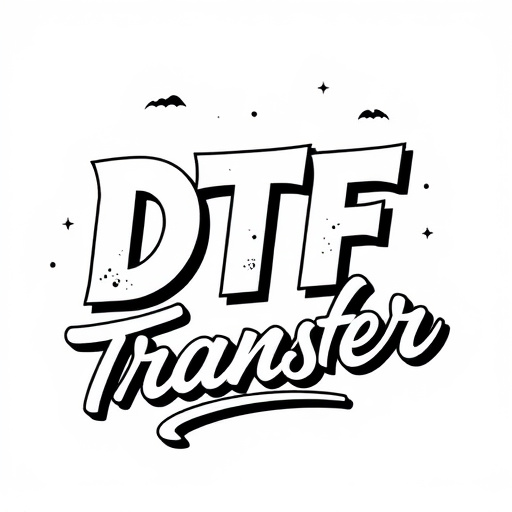
The quality of transfers designed for dark fabrics greatly depends on the printing technique employed. Traditional printing methods often struggle to achieve vibrant colors on darker surfaces due to the limited contrast between the dye and the fabric. However, advancements in direct-to-fabric (DTF) printing have revolutionized this process. DTF Transfer is a cutting-edge technique that offers exceptional color vibrancy and detail, making it ideal for dark fabrics.
This method involves precisely applying ink directly onto the fabric using specialized equipment, resulting in DTF Prints that are both durable and visually stunning. Unlike older techniques, DTF Printing allows for a wider range of colors and intricate designs to be reproduced accurately, ensuring that transfers on dark garments look as vibrant and detailed as they would on lighter fabrics.
Applications in Fashion, Sports, & More

The DTF Transfer (Direct to Fabric) printing technique has revolutionized various industries beyond fashion, offering vibrant and durable designs on dark fabrics. Its applications are diverse and ever-expanding. In the fashion sector, DTF is used to create eye-catching clothing and accessories, allowing designers to showcase bold graphics and unique patterns that pop against darker materials like black or deep navy. This technology enables brands to stand out in a crowded market, especially for streetwear and urban fashion lines.
Beyond fashion, DTF Printing finds its place in sports equipment and merchandise. Sports teams can now incorporate dynamic logos and sponsor marks onto jerseys and uniforms, ensuring high-quality visuals that remain crisp even after multiple washes. Additionally, DTF allows for personalized fan gear with photos or custom designs printed directly on fabric, elevating the experience for sports enthusiasts. This versatility makes DTF Transfers a go-to choice for anyone seeking to add vibrant, long-lasting prints to dark-colored fabrics in numerous sectors.
Best Practices for Maintaining Longevity of DTF Prints
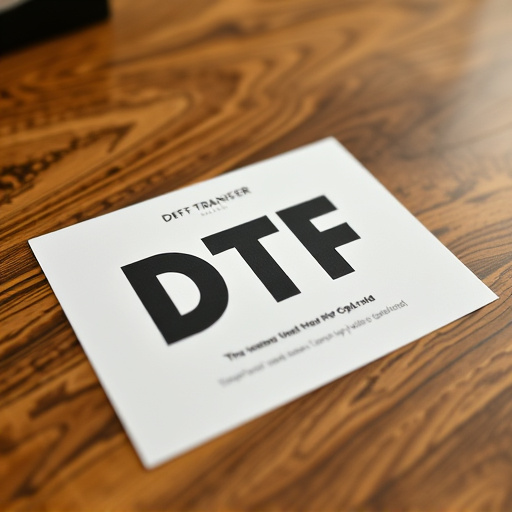
To ensure the longevity of DTF (Direct-to-Fabric) prints on dark fabrics, several best practices should be followed. First and foremost, using high-quality DTF transfer paper is essential; it should be designed specifically for dark garments to achieve vibrant colors that withstand washing and wear. The printing process itself demands precision; proper alignment and optimal print settings ensure sharp, detailed designs.
Additionally, heat press machines should be set at the recommended temperature and pressure levels for the specific DTF transfer and fabric type. Overheating or applying excessive pressure can lead to color fading or even garment damage. Post-printing care is also vital; washing instructions should be followed carefully to maintain print quality. Using cold water and gentle cycle settings, along with avoiding bleach and fabric softeners, helps preserve the vibrancy of DTF prints for a longer duration.




